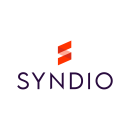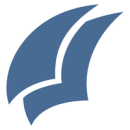Company culture is rapidly becoming a make-or-break facet of the job search experience for candidates. Even though the current generation has become notorious for job hopping, new hires want to know that they’re joining an atmosphere that will be welcoming, challenging and exciting — all at once. They want to know they can settle down somewhere, plant their career roots and be supported to seek out growth opportunities.
So what does a deliberate company culture look like? It depends!
At Sendle, Rachel Moore noted that the company layers a series of values together to create its culture, including humility, honesty and happiness. The director of people and culture also mentioned how team members put each other first, embrace feedback and encourage professional development. But what really stands out is the way employees don’t take themselves too seriously. It’s a delicate combination of qualities to balance, and she’s excited about how Sendle is nailing it.
Coming from a culture of a similar hue, the team at Syndio thrives in their open, honest environment. Carol Grant, VP of marketing, noted it’s not about the workflow style or the fun office perks and benefits. It’s the people — and who they are — that make up Syndio’s culture. Grant described how team members show up to work as “the range of their full selves.”
From marketing to engineering, Built In Seattle sat down with professionals from Syndio, PitchBook, Sendle, Xealth and Possible Finance who pride themselves on the qualities and practices that make their teams collaborative, humble and human. Though their cultures look a little different, what’s one noteworthy thing these five tech companies have in common? They’re hiring new talent.
How would you describe your company culture in one word, and why?
Human. I know, it’s a weird word to describe company culture, but what I’ve experienced while at Syndio is how people really show up as themselves, whether they are nursing their baby while dialed into a Zoom meeting or they’re being incredibly open emotionally because they’re having a hard time at home. People really bring the range of their full selves. This is definitely something that carries through to my team and how we operate, and it makes things more open and honest. When we don’t feel that we have to put up walls between the different parts of our lives, we really allow ourselves to see each other.
When we don’t feel that we have to put up walls between the different parts of our lives, we really allow ourselves to see each other.”
What’s the coolest project you’ve worked on recently?
I am working on building an amazing marketing team. We have gone from a team of three to a team of 13 in just over four months, and we are continuing to grow. We are adding new functions and deepening others, all to support Syndio’s growth. It’s an exciting time for us, and we are having a lot of fun testing and learning together as a team.
How would you describe your company culture in one word, and why?
Committed. This is a commitment to doing great work, being strong teammates, solving our users needs — and there is definitely commitment to having fun. As part of my work, I needed to think of new ways our users could interact with our data and help drive insights into their workflow. To help me and the rest of the team think outside of the box, we set up a design inspiration addition to our sprint retrospectives. At the end of each sprint, one person presents an interface design that they loved using in their personal life, and we all get to ask questions and figure out how pieces of it could be applied to our work. It’s a great way to get inspiration and learn about what my teammates enjoy doing with their free time and what tools they love using. The ideas and feedback from those inspiration sessions have already found their way into our releases.
To help me and the rest of the team think outside of the box, we set up a design inspiration addition to our sprint retrospectives.”
How long have you been with the company, and what professional growth or development have you seen in that time?
I have been with the company for nine months, and I have already been deeply involved in several core features on the platform. Coming from a technical product manager background, this role was one of the first where I had a user experience partner and had to consider user interface design as part of my overall work. My manager helped me identify additional training I could take and got me enrolled immediately. I also worked extensively with my UX partner to get a better understanding of what was expected of me as a product manager and how I could deliver quality and actionable feedback. This helps me in my role as I look to other areas of the platform. I now feel more confident on how to approach user problems on both the back and front ends.
How would you describe your company culture in one word, and why?
Sendle’s culture is humble. That’s the foundation of our 5Hs, a series of values — humble, honest, happy, hungry and high-performing — that build upon each other to create a culture that is uniquely ours. Humility at Sendle means putting others first, seeking the knowledge of our fellow team members and embracing feedback. We prioritize listening over talking, and don’t take ourselves too seriously.
This also naturally encourages an environment of mentorship and professional development, as we are focused on sharing the wealth — creating opportunities and holding space for each other’s growth. As a B Corporation, our mission is bigger than ourselves, and we work together for one purpose: to provide shipping that’s good for the world.
Our mission is bigger than ourselves, and we work together for one purpose: to provide shipping that’s good for the world.”
What’s the coolest project you’ve worked on recently, and how did it help you grow professionally?
Our people and culture team recently had the opportunity to collaborate with leadership and our network and finance teams in the development of our Sendle team plan, a new employee benefit giving us access to package delivery. Participating in this planning process was an excellent way to gain more context on how our service works. It exposed me to the many logistical considerations involved in rolling out a plan that is equitable across our global team.
What impressed me the most throughout this process was seeing our 5Hs exemplified in the planning, direction and feedback from our leadership team. They ensured the program was a genuine benefit to empower us to use as much of the Sendle product and services as possible. I’m very excited to Sendle my own carbon-neutral package for the first time!
How would you describe your company culture in one word, and why?
Collaborative. We deliver results by working together in cross-functional scrum teams with focused goals. We just completed a major upgrade for our business rules engine, which is used to process our customers’ orders correctly and efficiently. By collaborating together, a separate team at Xealth built an easy-to-use React-based web application on top of our rules engine as it was still in development. The combination of the rules engine and React-based user interface reduced the time needed to implement new rules for our customers by 87 percent. Now, customer-facing teams within Xealth are beginning to use the React UI to respond to customer requests, allowing us to delight our customers by significantly reducing the time between request and implementation.
We deliver results by working together in cross-functional scrum teams with focused goals.”
What’s the coolest project you’ve worked on recently, and how did it help you grow professionally?
I joined Xealth four years ago and the coolest project I’ve worked on recently is code named “Momo,” named after my pet lovebird. With Momo, we completed a major upgrade for our rules engine. We improved both performance and maintainability, and also introduced idempotency and cleaner state management.
On this project, I took a known area where refactoring was needed and collaborated to create a more sustainable vision for the future maintenance of a core business function. One key area for growth was simply the opportunity to take on a leadership role in this feature and think about concerns beyond correctness and performance. Some of these additional concerns included planning for schema correctness, feature support and supporting a UI to allow rule changes to be performed by a wider audience.
On the technical side, I incorporated some basic ideas of workflow engines and event sourcing, learned Harel statecharts and used the XState library to allow for idempotent execution at each state transition while processing the event stream. This project helped me grow in terms of developing product vision, leading a team and using best practices in building distributed systems.
How would you describe your company culture in one word, and why?
Collaborative. When Possible had a physical office, we had so much fun every day getting to work together. Once we went fully distributed, we had to take collaboration to a new level. We use awesome tools like Slack — where we have many different channels based on departments, roles and even projects — to constantly stay connected with our ever-growing team. Having a designated channel to talk about a specific topic makes for an amazing agile environment. Though we rely heavily on instant messaging, I know my coworkers are always a quick Google Hangouts video away, which takes our meetings to the next level with breakout room activities.
Having a designated Slack channel to talk about a specific topic makes for an amazing agile environment.”
How long have you been with the company, and what professional growth and development have you seen in that time?
I’ve been with Possible for more than two years, which is half the time the company has existed! When I first started here and we were a small group of individuals in an office, we would occasionally read books together. That was the start of our team trying to build growth and development activities. Today, we have a variety of opportunities to learn and grow. One exciting opportunity given to the company was leadership and management training, which gave me skills I still use to this day with my teams.















